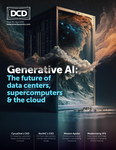With distributed computing increasing year over year and the demand for data usage at an all-time high, the design and construction of new data centers is evolving thanks to increased awareness around impact of digital infrastructure and climate change on communities.
The construction of new data centers is taking a holistic approach: optimized for new workloads and designed with sustainability, scalability, and democratization in mind.
Fortunately, the data center industry has demonstrated efforts to improve their operations’ social and environmental impacts over the last few years, including:
- Enhanced energy efficiency with the installation of innovative cooling processes
- Increased focus on preserving natural resources
- Moves toward better emissions monitoring
- Obtain energy from renewable sources, with some operators already running on 100 percent green electricity
However, as demands for reducing emissions within supply chains increases and future government regulation on scope 3 emissions is strongly anticipated, we must consider how data center operators must innovate to ensure that every new facility is designed from the ground up for a decarbonized, interconnected future.
Sustainable by design
Building any new facility should start by meeting the criteria outlined by a green certification body like BREEAM, to ensure it’s appropriately constructed for a net-zero carbon future and delivers the lowest PUE (Power Usage Effectiveness) possible. While difficult, achieving certification ensures that design standards are future-proofed and easily identifies additional efficiencies that can be implemented.
Certification programs include a holistic view of the project, from site selection through to daily operations long after the construction is complete.
Modern construction techniques allow operators to repurpose existing materials and recyclable content, like steel or aggregate within the original foundation, to reduce construction waste.
Choosing sustainably sourced materials is essential, as well as purchasing these from local suppliers to cut down on your operation’s carbon footprint. Reverse logistics, whereby delivery vehicles are loaded for inward and outward trips to aid the recycling of packaging materials and cut down on vehicle emissions can also be employed effectively. Focusing your design not on energy efficiency, the standard of building materials used, and the management of natural resources throughout, will ensure that the construction of a facility firmly considers the wider environment.
Reducing water consumption is critical to creating new data centers. Closed-loop systems have greatly reduced the amount of fresh water consumed within data centers by allowing water to be continually treated and recirculated for cooling purposes. Mapping location temperatures and working with local weather patterns can assist operators to monitor their systems more carefully to reduce evaporative cooling as much as possible, as well as harvesting rainwater from the data center’s roof to be treated and used for other purposes.
There’s no reason modern data centers should need to continually draw on fresh supplies of water in the volumes they once did, which is even more important to consider in locations affected by drought and as water scarcity becomes an increasingly pressing global issue.
Temperature control is another crucial area, with data centers now more likely to be kept tropically warm at around 79˚F. The air management within the data halls is a fine art and an essential element of maintaining a manageable PUE. Hot and cold aisle containment allows operators to channel and control the heat within the data center more effectively and efficiently.
Consider local communities
With data space at a premium, particularly within large cities where there are high digital demands among growing populations, there is an increased need for physical infrastructure to enable vast amounts of data transference.
However, data center operators must consider how continued development will impact these communities and consider an alternative. Existing brownfield sites are ripe for remediation by operators with the expertise and capability to ensure that the site is responsibly managed, any old assets and equipment is disposed of professionally, and any environmental contamination is monitored appropriately. In this approach, data center development can set the stage for a net positive impact by remediating existing issues while creating new jobs.
Retro-fitting existing sites is also beneficial to communities. These data centers are often much smaller, located on the outskirts of cities, and offer the speedy and accessible Edge services the modern city demands, without impacting the local community in unintended ways.
They can be combined with other services the operator may already provide, like Asset Lifecycle Management (ALM) into existing sites, offering a way to fill redundant space with a complimentary and much-needed service.
Centrally located facilities will always be needed, but operators can proactively reduce the impact on over-congested locations while achieving maximum utilization of their owned space.
Bringing the customer with you
New data centers will be at their best when regularly sustained with the newest and most efficient equipment. If old and inefficient servers are installed, the overall efficiency of the facility will be impacted.
Fortunately, many customers are far more educated on sustainability and have their own environmental goals. Keeping these in mind can help them collaborate with operators to use the most efficient servers and additional equipment possible. This can help customers limit energy usage and keep costs manageable. Meanwhile, operators can better measure the data center’s performance metrics and if any equipment requires an engineering visit.
For operators with an ALM offering, customers can often find strong cost-based benefits encouraging them to recycle older equipment, with greener replacements often having far lower running costs due to improved efficiencies and funded in part from the re-sale of older technologies.
There will always be improvements as technology advances and data centers become fully sustainable and self-sufficient, but the roadmap to data centers of the future is firmly in place and taking shape. In fact, the future may be closer than we think.


